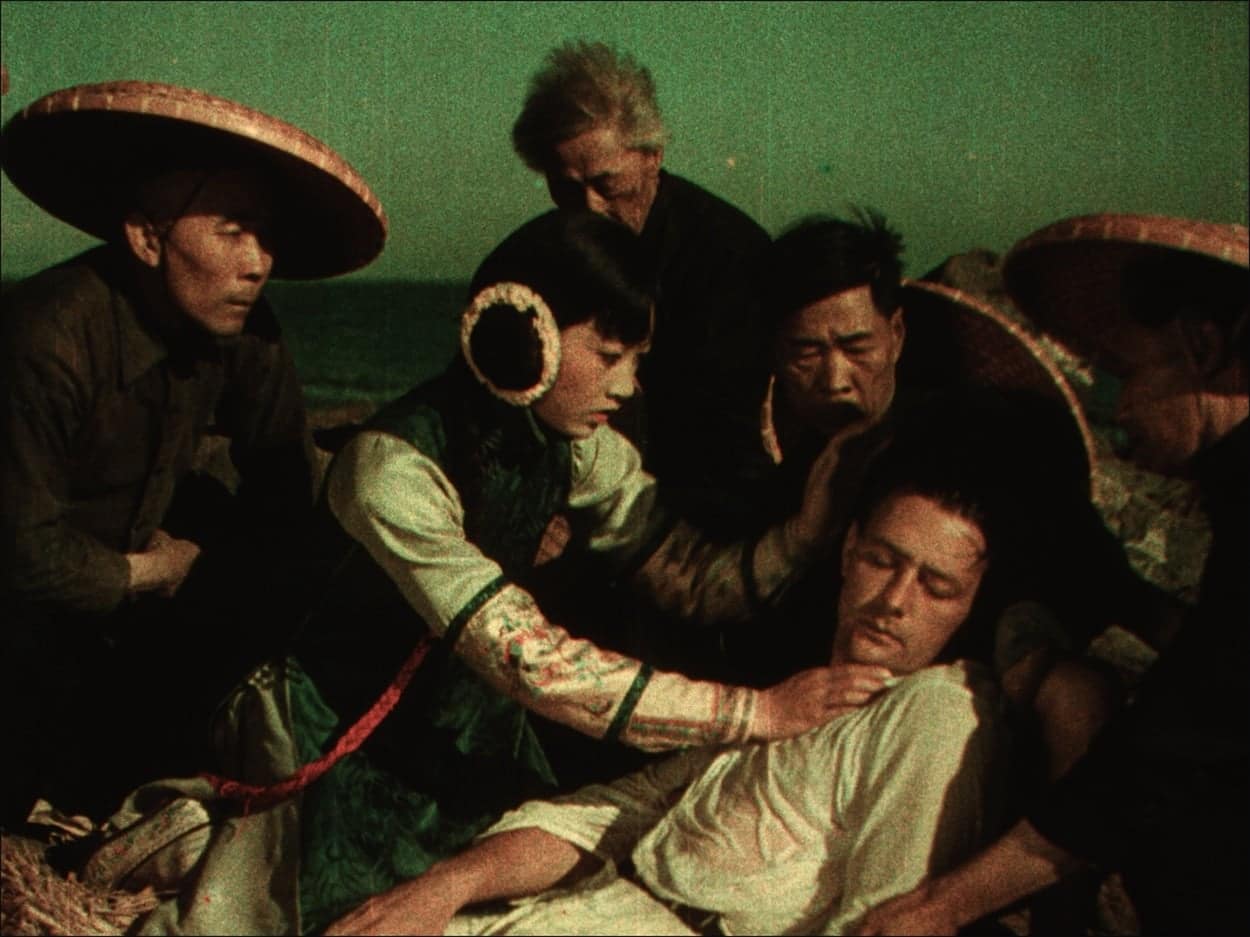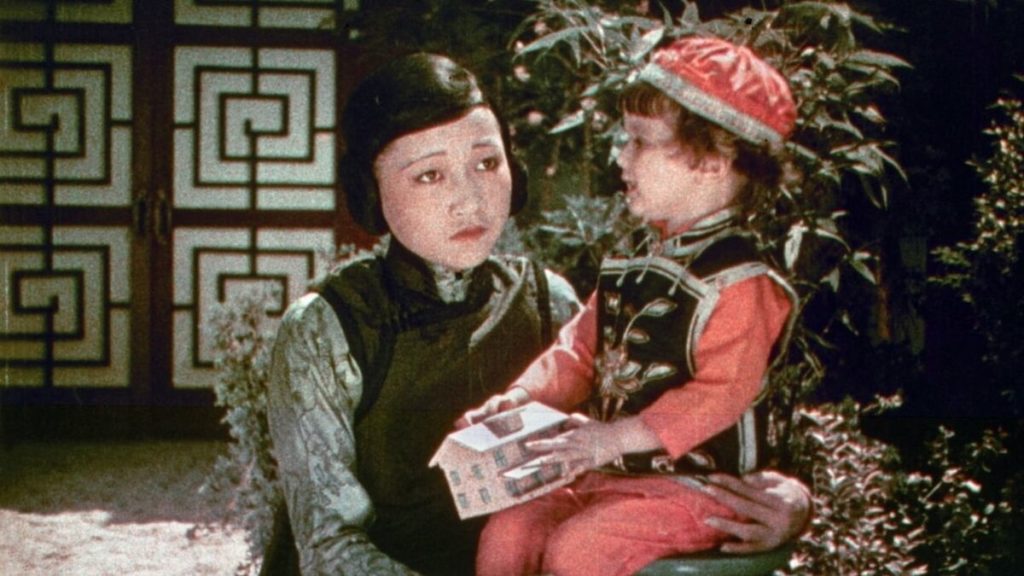There are two good ancillary reasons for watching The Toll of the Sea, on top of the fact that it’s a touching, almost heartbreaking drama of a sort it’s almost impossible to imagine being made today.
The first is that it stars Anna May Wong, Hollywood’s first Chinese American star, here only 17 years old in a role that puts her to the test in terms of subtle emoting, and finds her sailing through unscathed.
The second is that it’s the oldest existing Technicolor movie left on the planet. There was an older one, The Gulf Between, made in 1917, but that went up in flames and is now permanently lost. It was made in Technicolor’s Process 1, which required a special camera to project the film. The Toll of the Sea was made with Process 2, a process the Technicolor company knew would be a stopgap, and which they replaced in 1928 with… drum roll… Process 3, followed closely by Process 4 in 1934, which delivered the sort of rich, vibrant Technicolor which (with a couple of tweaks) would be the gold standard for 50 years – Snow White and the Seven Dwarfs to Apocalypse Now and beyond.
But back to Anna May Wong and Process 2, a green/red (ie no blue) two-colour Technicolor which split the image with a prism and shot each frame twice, with different filtration. The developed print was then sandwiched together, and would run through a normal projector, though with a terrible tendency to buckle and “cup”.
The Toll of the Sea was also thought lost until this version turned up in the 1980s. It’s the filmic restoration from that time that we can watch now. No one has, as yet, for all its historical venerability, given this ancient celluloid document a thorough digital going over, but what we have isn’t bad at all and is very watchable, fairly clean, and not too disfigured by scratches or the sort of flashing that’s common in old movies.
With a shift of location, it’s in essence the Madame Butterfly story retold from a Chinese viewpoint. Wong plays Lotus Flower, a pretty young Chinese woman who finds an American sailor half dead in the sea one day and revives him, whereupon they fall instantly in love. He promises her the earth, though neat cutaways to scenes between Allen (Kenneth Harlan) and his fellow Americans in a local bar reveal that Allen isn’t prepared to defend his sweetheart when they tease him about how “different” she is. Trouble is obviously brewing.
This is the meat of the story – his utterly craven, pathetic, weakling’s attitude to her and her devotion to him, or the idea of him, even after he’s gone back to America and found a white woman of his own to marry (again).
Two scenes are particularly emotional, and work as they are meant to all these decades later. In one, Lotus Flower dresses herself up in what she thinks of as the latest American fashion, ready to be taken with Allen to the USA. She’s as wrong about that as she is about the dated outift she’s wearing. In the second, even more affecting, scene Allen returns years later, with new wife Elsie (Beatrice Bentley) and introduces Lotus Flower to her. This is lump in the throat stuff, made even more unbearable when the small child of Allen and Lotus Flower bustles into the scene and his mother pretends he’s the child of the neighbouring Americans, so as to spare the feelings of the blameless Elsie.
For a silent film it’s all done in an exquisitely subtle way, the interaction between the two actresses, Wong and Bentley, particularly. The scenes between mother Lotus Flower and her son, Allen Jr (actually played by a girl, Priscilla Moran, billed as “Baby Moran” to hide the subterfuge) are also lovely to watch. The kid has chops.
The Madame Butterfly story dictates that the heartbroken Oriental will kill herself after being abandoned. We’re spared that here because the last two reels of the film have disappeared. To help plug the gap the 1980s restorers instead took an old two-colour Technicolor camera and shot some footage of the sun dipping down into the Pacific Ocean at the end of the day, along with a couple of intertitle cards using text from Frances Marion’s original treatment.
Director Chester Franklin shoots it in static tableaux, no camera movement, and makes the most of the process’s red/green bias with scenes shot in the leafy outdoors and in gardens full of red flowers.
There is a curio aspect to this film, undeniably, and aspects of it are obviously antique. And yet it works. A woman committing suicide over a man. An American male behaving like an absolute shit and abandoning a woman because she’s a foreigner. So much stoic suffering by Lotus Flower. You’d never see anything like this today. Which is another very good reason for watching these century-old movies.
The Toll of the Sea – Watch it/buy it at Amazon
I am an Amazon affiliate
© Steve Morrissey 2022


